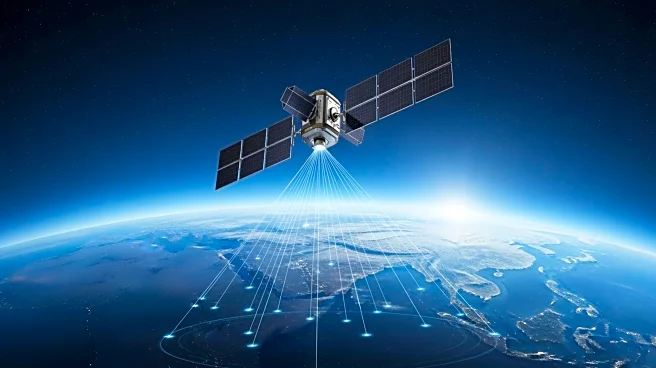What's Happening?
Lynk Global and Omnispace, two satellite communications companies, have announced a merger aimed at enhancing direct-to-device (D2D) satellite connectivity. The merger will leverage Omnispace's globally coordinated S-band spectrum and Lynk's low-cost,
multi-spectrum satellite technology platform. This collaboration promises to deliver mobile voice and messaging services to over 7 billion smartphones and IoT devices, with a focus on developing markets. SES, a global space solutions company, will become a major strategic shareholder, facilitating the deployment of D2D and IoT services for mobile network operators, enterprises, and government customers.
Why It's Important?
The merger between Lynk and Omnispace is significant as it aims to expand satellite connectivity to underserved regions, potentially transforming communication infrastructure in developing markets. By combining their technologies, the companies can offer scalable service delivery across the Americas, Europe, Africa, and Asia. This could lead to improved access to mobile connectivity, fostering economic growth and development in these areas. The involvement of SES as a strategic shareholder further strengthens the merger's potential impact, providing access to a multi-orbit network and globally deployed ground infrastructure.
What's Next?
Following the merger, the new entity will focus on deploying its enhanced D2D services globally, with particular attention to developing markets. The collaboration with SES will support engineering, operations, and regulatory needs, ensuring a robust deployment strategy. The companies aim to leverage their combined resources to accelerate the rollout of satellite connectivity, potentially leading to new partnerships and collaborations with mobile network operators and government entities in target regions.
Beyond the Headlines
The merger could have long-term implications for the satellite communications industry, setting a precedent for future collaborations aimed at expanding connectivity in underserved areas. The focus on developing markets highlights the growing recognition of the importance of digital inclusion and the role of satellite technology in bridging connectivity gaps. This development may also influence regulatory frameworks and policies related to satellite communications, as companies seek to navigate the complexities of global spectrum management.















